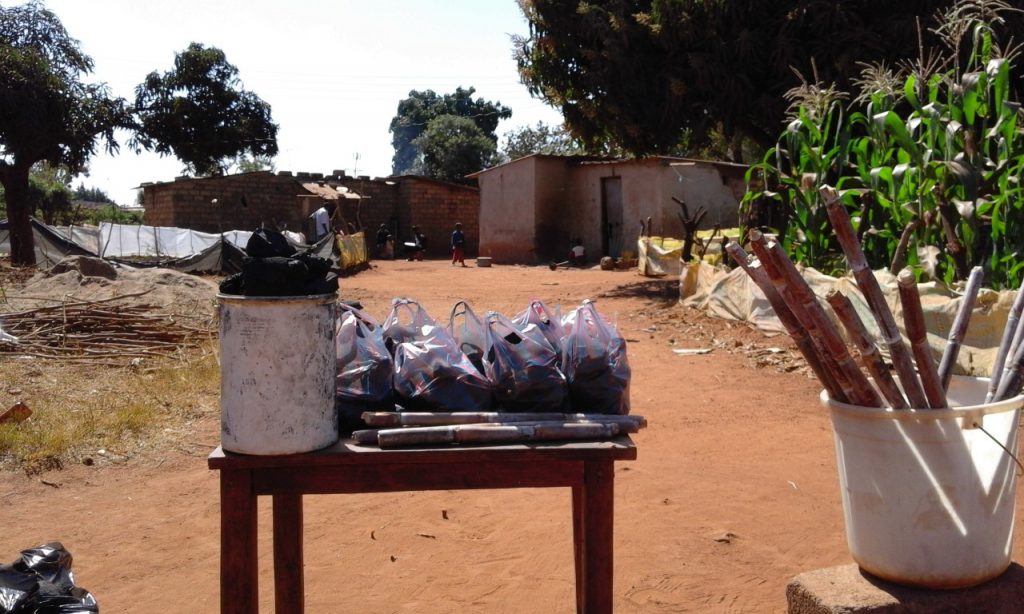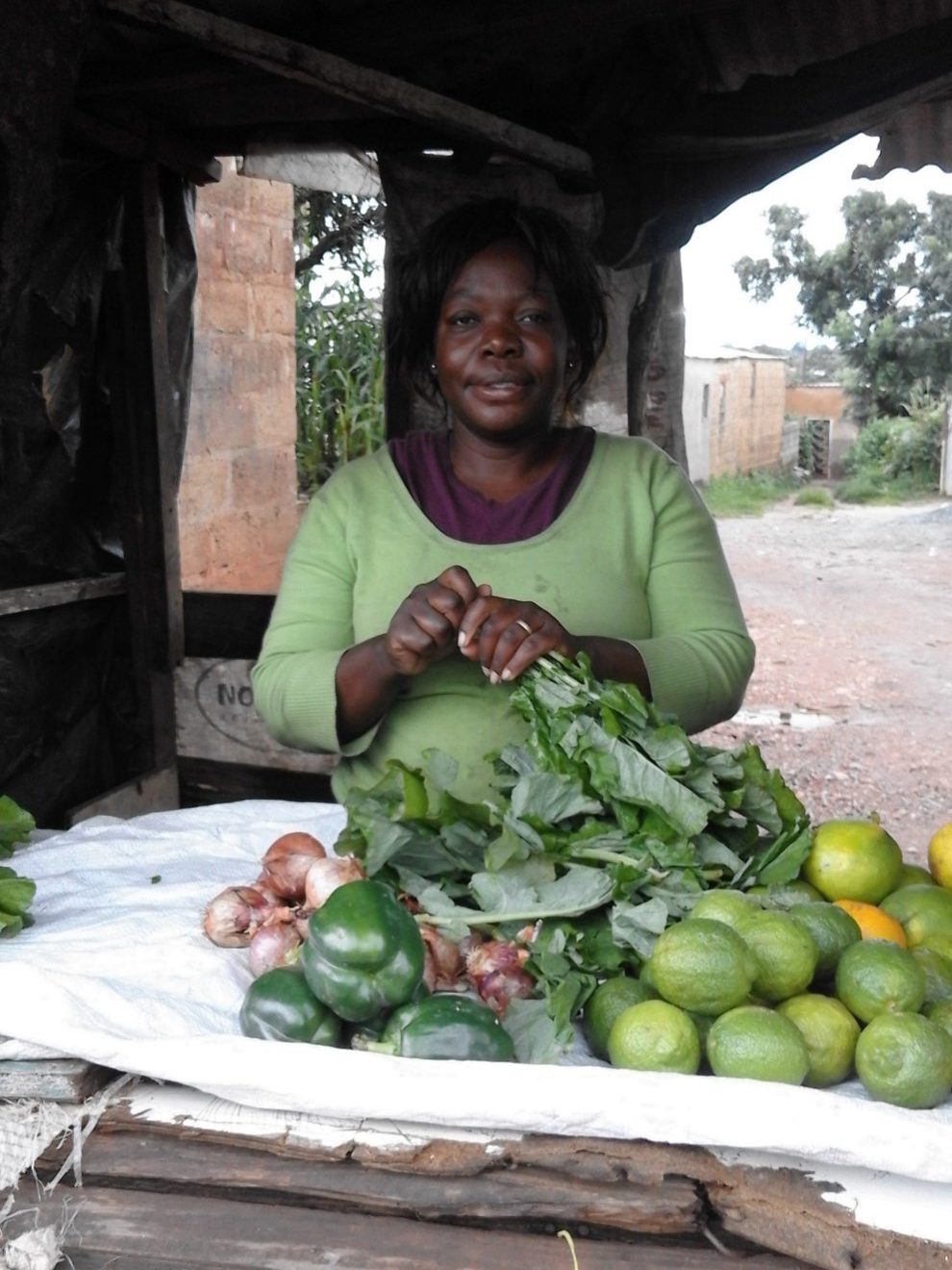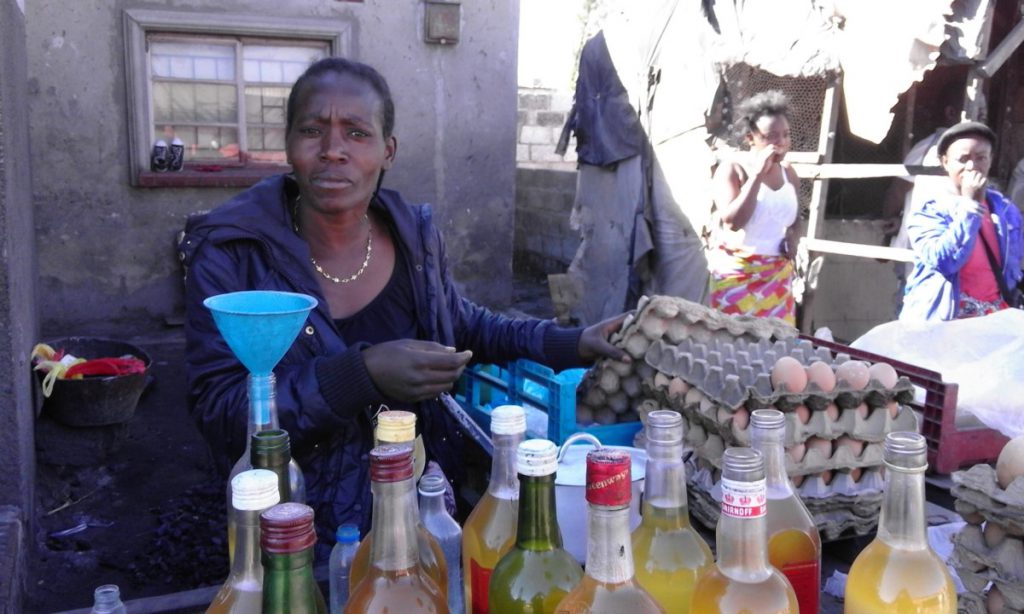A life on the margins? Living and making a living in an African slum
Published 22 September, 2021
Cecilia Fåhraeus
PhD and Lecturer at the Department of Geography, Uppsala University
The slum remains politicised and socially marginalised despite being weaved into the spatial and economic fabric of the city. Cecilia Fåhraeus, PhD and lecturer at the Department of Human Geography at Uppsala University, discusses the geographies of slum dwellers’ livelihood activities using research conducted in Lusaka, Zambia, illustrating the initiative of these communities despite the hard realities they are faced with.
Sub-Saharan Africa is urbanizing rapidly and in its wake follows a growth in slum settlements. Slums have throughout history had a contentious place in the city: they have been looked upon with contempt and shame and seen as a blight on the city’s surface. In many African countries, urban authorities have regarded slums as standing in the way for their vision of the modern city. In a world where cities compete to attract investment, slums are commonly seen as an obstacle to urban growth. After all, staff of international corporations and organizations want their cities to be safe, healthy, and enjoyable. They prefer to set up shop in places where the authorities are capable, progressive, and able to keep their populations in check. Slums rarely fit this image.
The slum: a history of shifting perspectives
Over the years, governments and donors have been forced to concede that slums are unlikely to disappear anytime soon. They are not transitory places for newly arrived migrants but established parts of the city where people often spend their entire lives. They fulfil critical housing needs where governments have failed to provide. This admission has in some places resulted in shifts from strategies based on demolition (which, apart from their deeply problematic relationship with human rights, seldom prove very efficient) to less hostile approaches. In situ upgrading targets slum populations in their own settlements and aims at providing tenure security and critical infrastructure such as water and sanitation as well as improving housing standards. The recognition of slum dwellers’ own voices has led to the formulation of participatory approaches which ideally depart from the community’s self-identified needs. This rhymes with a change in the perception of the slum as a place of misery to a locus of creativity and entrepreneurship as people struggle to create a decent life for themselves.

Despite the spread of more accommodating notions of the slum, African governments continue to demolish low-income settlements in the name of urban development. The governments’ relationship to their cities’ slums can be described as ambivalent, at best. Zambia constitutes no exception to this tendency. In colonial times, African workers’ compounds in Lusaka were labelled “peri-urban settlements”, underlining their politically peripheral status, and appeared as blank spaces on the city’s maps. This concept has stuck and is still used in official language. After independence in 1975, governments have shifted between aggressive demolition policies and negligence. A few settlements have been upgraded, but in some of these cases, improved houses have been allocated to the administration’s civil servants rather than to the residents. Nowadays, settlement improvement is primarily initiated and financed by external donor organizations, with or without the Zambian government as a partner.
Between 2014 and 2017, I spent considerable time in three of Lusaka’s slums: Garden, Bauleni and Linda in order to explore the geography of slum dwellers’ economic activities. I mapped all livelihood locations of every economically active member of 442 households, such as a farmer’s field on the border to Malawi, a maid’s workplace in a neighbouring high-income settlement, or a trader’s vending site on a street corner. Among many other things, I wanted to examine what slum dwellers do for a living and where they do it, and what this can tell us about the slum and how it relates to its various conceptualizations. A place of hope or despair? An urban blight or an untapped potential? A place on the margins of society, “peri”-urban, as in not quite urban?
Exploring the geography of slum dwellers’ livelihoods
By studying slum dwellers’ economic activities on three different spatial scales – the residential settlement, the city, and locations beyond the urban territory – important conclusions were drawn with regards to Lusaka’s slum dwellers’ position in social and economic life. A crucial finding was the significance of the residential settlement for their livelihoods. In the slum, people were exposed to a variety of income-generating strategies such as the production and trade of goods and services, and work opportunities. The residential settlement emerged as a critical information centre where job openings were announced, where crafts and business strategies were taught, and where entrepreneurs became connected with clients and wholesalers. Start-up capital for businesses was often generated through local social networks, either through loans or communal savings groups (chilimba). Women in particular relied on neighbours to look after their children when they were working or going to the market to buy supplies. The unregulated nature of the slum also provided important opportunities especially for women’s economic ventures. Shops and market stands could be set up right outside your own house, allowing women to earn an income and take care of household chores simultaneously.

In many ways, the slum constituted its own economic microcosm where its residents provided goods and services adapted to their own and to their customers’ often vulnerable economic situation. This was enough to ensure survival for many, but it needs to be acknowledged that these livelihoods rarely constituted a pathway out of poverty. Local markets were often saturated and competition fierce. Nevertheless, the nature of this localized economy underscores the agency of slum dwellers, and their drive to become self-reliant despite severe constraints.
Despite the self-sustaining nature of the slum economy, Lusaka slums were far from the spaces of separation and seclusion as they appeared on colonial maps. On the contrary, they were intimately linked with other parts of the city, especially the city centre and adjacent middle- and high-income residential areas. In the city centre, slum dwellers acquired inputs from markets to be used in their businesses or worked as bus drivers and conductors around traffic hubs. They constructed high-rise office buildings for Chinese corporations seeking to gain a foothold in underexploited markets. In high- and middle-income residential settlements, slum dwellers worked as maids, gardeners, chauffeurs, security guards and cooks. They built houses for high- and middle-income households, installed their electricity and connected their plumbing. They worked as cashiers and packers in their supermarkets and waited on them in restaurants.

The geography of slum dweller’s livelihoods in the city puts light on their critical contribution to the urban economy. Through their labour, they enabled the city’s expansion and served the so-called creative class believed to stand at the forefront of Lusaka’s development. This relationship challenges the image of the slum as a burden and a drain on the city’s finances. In addition, the many livelihood connections emanating from the slum demonstrates it cannot be seen as peripheral, as not-quite-urban. Instead, the goings and doings of its residents in the execution of their livelihoods emphasizes how closely it remained intertwined with the rest of the city, and especially the city centre and its leafy suburbs.
Slum dwellers’ economic activities where not only confined to the city. In many cases, they transcended the urban territory to farms and markets far out in the country, sometimes crossing international borders. Mine workers laboured on the Copperbelt, regularly sending money home to their families. Entrepreneurs travelled to Tanzania for rice and illegal bushmeat, to Malawi and Zimbabwe for charcoal, to the Democratic Republic of the Congo for colourful fabrics, and to South Africa for blankets and kitchenware. Even more essential and complex where the multiple support networks extending from the slum across Zambia: children being sent to their grandparents in the ancestral village to allow both parents to work full time, food being sent from relatives’ farms while cash and clothes made their way in the other direction.
Multiple visions of the slum
The geography of slum dwellers’ livelihood activities in Lusaka allows us to see the slum in a different light. While its social and political marginalization cannot and should not be denied, the slum remains firmly integrated into the city’s spatial and economic fabric. It is a place of flows but also of regularity and permanence. It is a place of astonishing initiative framed by rigid and oppressive boundaries. It is a place of hope as well as of despair. Above all, there is a need to change perspective and recognize the value of the slum to the wider city. But it is also necessary to acknowledge that it is the slum dwellers who bear the costs of punitive measures such as demolition schemes or neglect. Their voices deserve to be heard, not only by the donor community but by the governments who claim to represent their interests.
Cecilia Fåhraeus
September 2021
About the author
Cecilia Fåhraeus is a PhD and lecturer at the Department of Human Geography at Uppsala University. She positions herself within the field of critical urban geography, with a particular emphasis on urbanization processes in sub-Saharan Africa, slum, and livelihood activities among the urban poor.
Share
Co-creation!
Do you miss something here? Would you like to contribute? Please let us know: urbanfutures@slu.se
